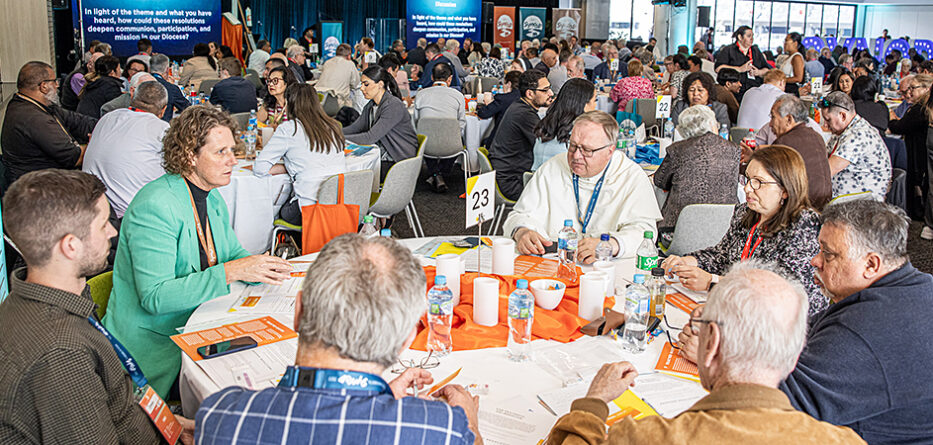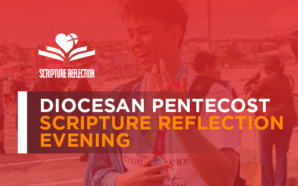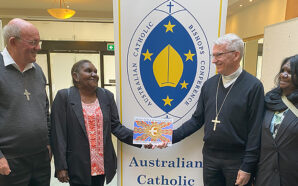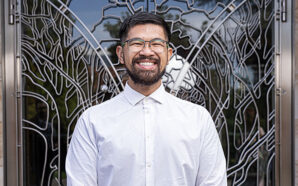In promulgating the first Diocesan of Parramatta Synod, Bishop Vincent Long OFM Conv, Bishop of Parramatta, proposed this ‘anchor question’: “In light of the call to become a more synodal Church, where is the Holy Spirit calling us to in the Diocese of Parramatta?”( Synod Directory 2023-2025, p.8). The call to listen deeply to what the Holy Spirit is saying to the Church has been faithfully woven through each stage of the Synodal process, culminating in the grace-filled Assembly from 13-15 October this year.
This emphasis on listening to the Holy Spirit is echoed throughout the Scriptures. In the Gospel of John, Jesus assures his disciples on the evening before his crucifixion, that he will send “the Spirit of Truth who will teach them all things” (Jn 14:17). The Book of Revelation expands on this several times: “Let them hear what the Holy Spirit is saying to the churches” (Rev 2:7; 2:29; 3:22). To experience first-hand how thoroughly this core biblical teaching has been implemented in the Diocese of Parramatta has been, for me, a great grace; indeed, it was a privilege to be invited to participate. In a very real sense, the October assembly, although far removed physically from Rome, can truly be described as a mini-mirror image of what was taking place simultaneously at the global Synod on Synodality.

Sr Margaret Beirne RSC (second left) is seen in discussion during the Diocesan Synod at CommBank Stadium, Parramatta. Image: Diocese of Parramatta
In terms of its scriptural focus, listen to the echo in Pope Francis’ homily on the 30 September Vigil in St Peter’s Square. Do you think perhaps he borrowed it from our Parramatta documents? “To be synodal is to welcome one another, in the knowledge that we all have something to share and to learn, gathering together to listen to ‘the Spirit of truth’ (John 14:17) in order to know what the Lord ‘is saying to the churches’ (Revelation 2:7).” If this was the common spiritual basis of both synods, there were many other links clearly visible during the three days of the assembly.
Once we were all settled at our round tables, each session began with prayer, a brief video input to set the day’s theme, explanation of the process from one of the facilitators, followed by rounds of spiritual conversation. Just like the Vatican process, we used three stages, each of which was followed by a reflective silence. These stages were: first, speaking in turn, and without interruption, of one’s personal experience; second, sharing what moved us during this first stage; then thirdly, a time of free discussion on the theme. There were also segments at which individuals could address the entire assembly.
So how did this extraordinary event hold together and produce such a rich and rewarding experience for those present, and by extension for the thousands of people who had contributed so readily during the preparatory phase? Like the Assembly members, they were familiar with the process from the many sessions that had been part of the preparation since the convocation in March up to the actual Assembly in October.
This was due firstly to the vision and courage of Bishop Vincent in convoking a diocesan synod, the first in Australia, and possibly among the first anywhere. As such, there were few roadmaps (“Behold I am doing a new thing”, Isaiah 43:19), so his modelling it on the global Synod was an inspired insight including his adopting the triple theme: “Communion, Mission, Participation”. At the same time, he took care to educate the whole community on the canonical basis for diocesan synods (Canons 460-468). This foundation allowed for constructive responses to anticipated resistance, and to provide a guide when, as happened once or twice during the Assembly itself, a strong negative vote on a proposal was able to be reviewed and reworded, thereby included in the decisions moving toward possible inclusion in a pastoral plan.
In practice, this vision caught fire in the preparation phase, with an outpouring of dedication from volunteers, encompassing a wide range of tasks. Think of the amount of detailed preparation that must have been involved: communication, liturgies, collating videos, papers, booklets, prayer leaflets, tables, and name tags. And no event can overlook the human need for sustenance, especially when minds, hearts, and especially bodies are so busily engaged; the catering was exceptional, as were the location, facilities, and parking availability; even the current unpredictable weather patterns mostly held out!
Several times we heard reference to the experience of the prophet Elijah as he waited at the entrance to the cave for God to speak (1 Kings 19:11-13). “But the Lord was not in the wind, … nor in the earthquake… nor in the fire, but in the sound of sheer silence. When Elijah heard it, he wrapped his face in his mantle and went out and stood at the entrance of the cave.” Just as Elijah found God not in grand displays but in quietude, the Synod honoured these moments of silence, allowing us to listen intently to what the Spirit is saying to us, both individually and in communion with others. Holding the whole three days in God’s embrace, were the Eucharistic celebrations with which the Assembly opened and closed.
I would like to conclude by quoting from Bishop Vincent’s homily at the closing Mass. “Inspired by the example of Jesus and the guidance of the Holy Spirit on the Diocesan Synod, may we go forth and embody the new way of being Church together, sharing responsibility and proclaiming God’s Kingdom. In a way, our task is not yet done. It has only just begun. For being synodal is not merely an event but a new way of communion, participation, and mission, which is rooted in our discipleship.”
Dr Margaret Beirne RSC is a Sister of Charity and Associate Professor of Biblical Studies at St Andrew’s Greek Orthodox Theological College.
The Diocesan Synod Report summarising the Synod and its outcomes was released to the people of God in the Diocese of Parramatta on Friday 1 December. To read and download the document, and for future updates, visit the Synod website: https://parracatholic.org/synod2023/








